INTRODUCTION:
You’ve heard of cold brew and iced lattes—but ice drip coffee? It’s the mysterious, slow-dripping brew that’s taking coffee shops and home baristas by storm. With a complex flavor profile and crystal-clear texture, ice drip coffee isn’t just a trend—it’s an art. In this guide, you’ll discover what makes it unique, how to brew it like a pro at home, and why it might become your new iced coffee obsession.
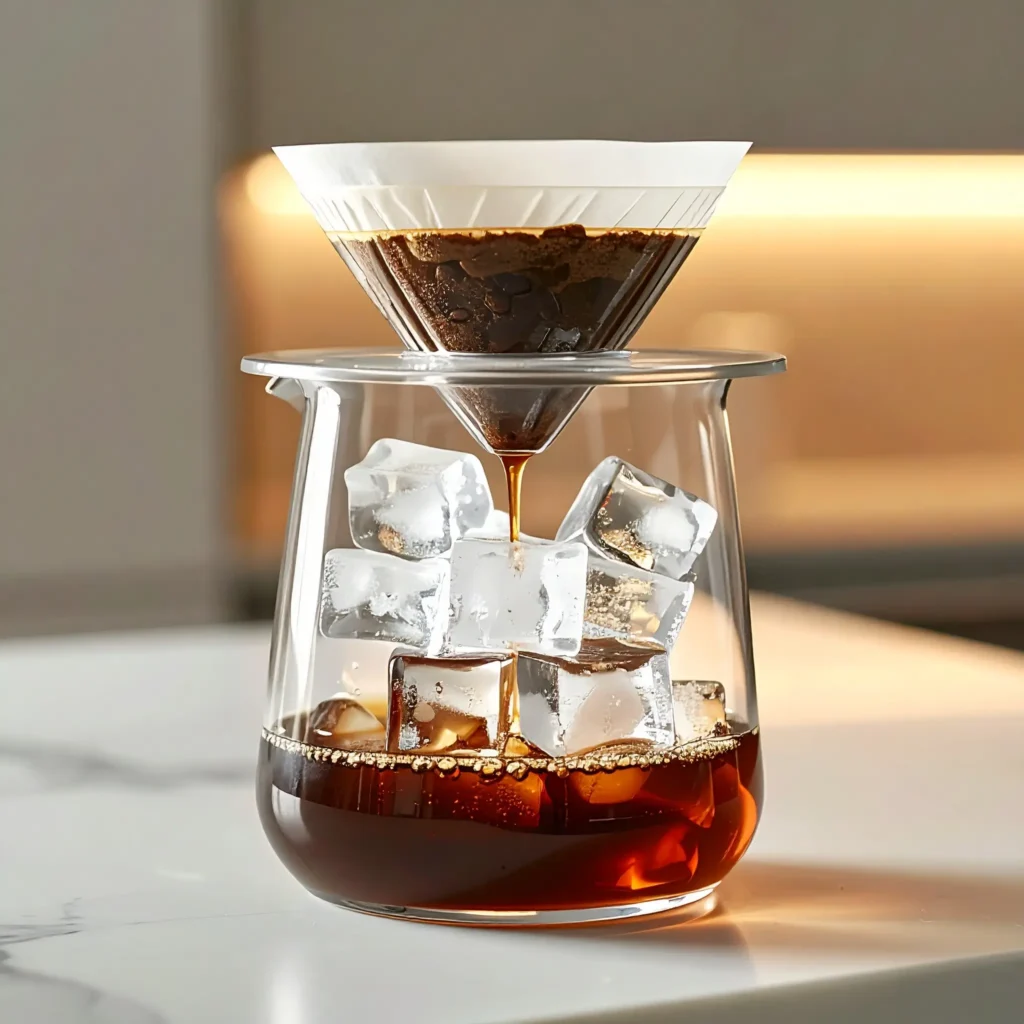
1. WHAT IS ICE DRIP COFFEE?
1.1 A Cold Coffee Method with a Twist
Ice drip coffee—also known as Dutch coffee or Kyoto-style coffee—is brewed by slowly dripping cold water over freshly ground coffee. This unique method produces a clean, crisp flavor that’s both rich and incredibly smooth. Unlike hot coffee that’s cooled down, ice drip is designed from the start to be served cold, maintaining its refined flavor profile.
1.2 Not to Be Confused with Cold Brew
Although often lumped into the same category, ice drip coffee and cold brew are very different. Cold brew immerses coffee grounds in cold water for 12–24 hours. Ice drip, on the other hand, uses gravity to gently extract flavor drop by drop. This percolation-style method typically takes 3–12 hours and results in a more complex, bright, and aromatic flavor with less bitterness than cold brew.
1.3 A Rich Cultural Backstory
The origins of ice drip coffee trace back to Dutch traders in the 17th century who used the method for brewing coffee without heat during their voyages. Japanese cafés, especially in Kyoto, later refined this into a visual ritual, using elegant drip towers that made the process both an experience and a spectacle. Today, it’s popular in third-wave coffee shops around the world.
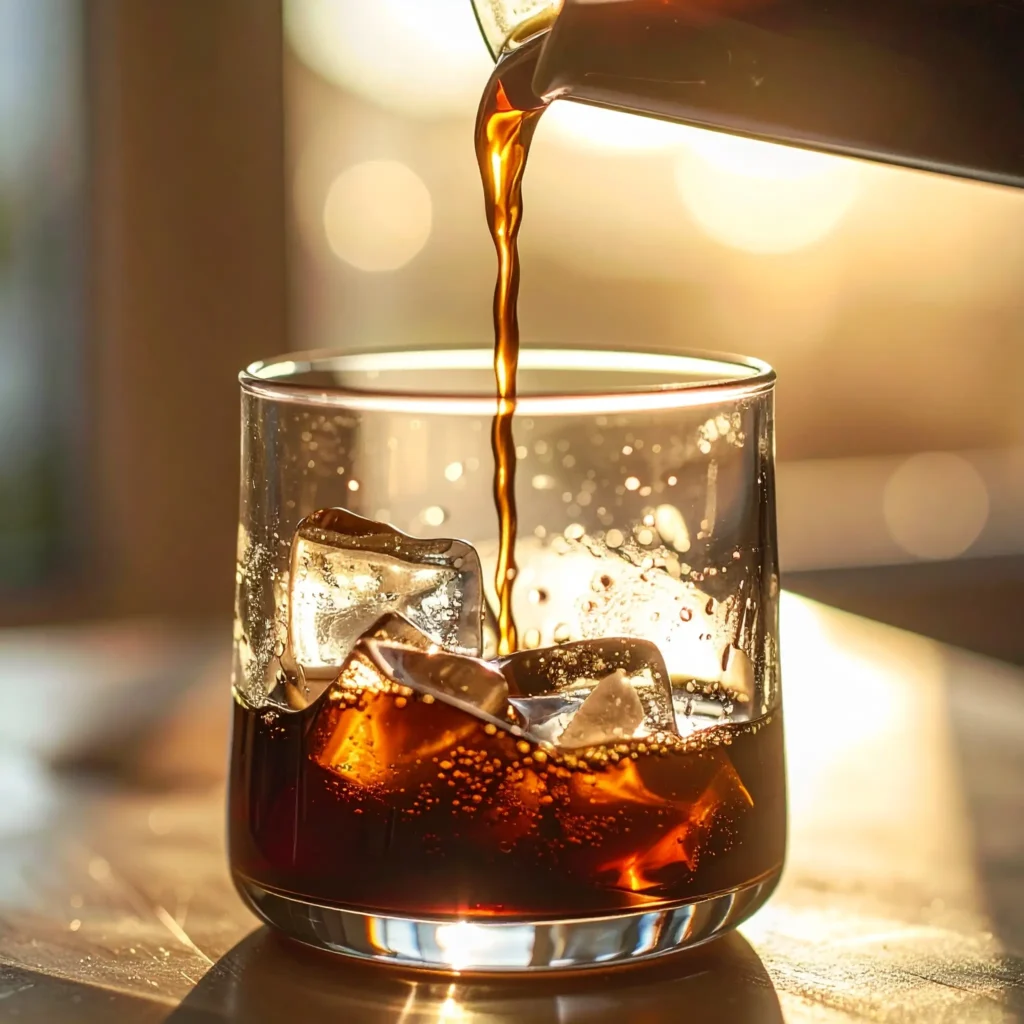
2. WHY ICE DRIP COFFEE IS WORTH THE WAIT
2.1 A Flavor Explosion in Every Sip
Because it extracts the coffee slowly and at a low temperature, ice drip preserves subtle aromas and tasting notes. You’ll often get hints of citrus, florals, berries, and even spice—flavors that hot water tends to mute or destroy. It’s perfect for light to medium roasts where those complex layers really shine.
2.2 Better Shelf Life than Most Iced Coffees
Ice drip coffee can be stored in the fridge for up to 7 to 10 days without losing its signature flavor. Unlike cold brew, which can sometimes taste stale after a few days, ice drip keeps its freshness longer. It’s ideal for batching your weekly iced coffee fix ahead of time.
2.3 A Visual and Meditative Brewing Ritual
Watching a slow, steady drip of water fall onto fresh coffee grounds over the span of hours is surprisingly relaxing. Whether you’re using a minimalist DIY setup or a full Kyoto-style drip tower, the process itself is deeply satisfying. It also becomes a beautiful centerpiece in any kitchen or coffee nook.
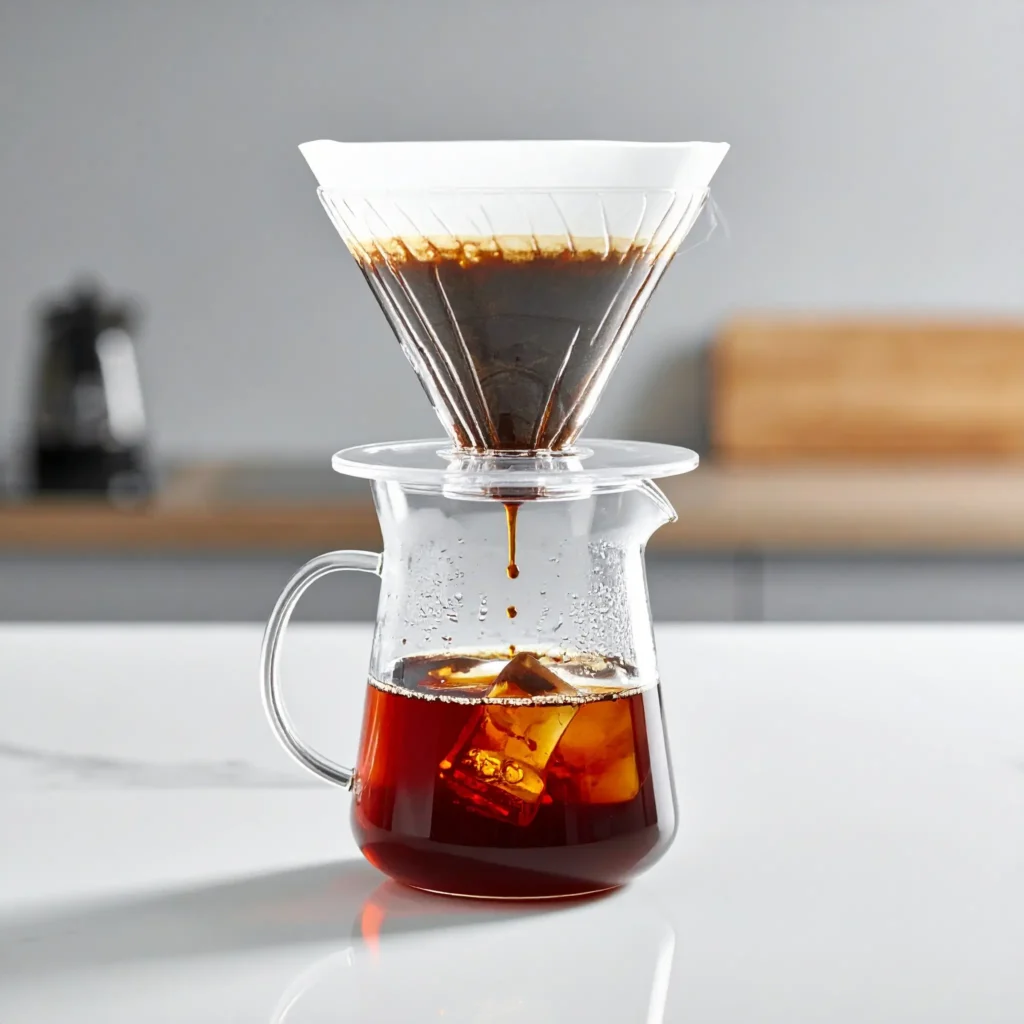
3. HOW TO MAKE ICE DRIP COFFEE AT HOME
3.1 Gear Up: Tools You’ll Need
While a traditional Kyoto tower is ideal, you don’t need fancy gear to start. You can make ice drip coffee using:
- A pour-over dripper (like a V60 or Chemex)
- A coffee filter or cloth filter
- A clamp or valve to control the drip rate
- A carafe or mason jar to collect the coffee
- A burr grinder for consistent grind size
- Cold, filtered water and plenty of ice
3.2 Choose the Right Beans for the Job
For the best results, go with high-quality, single-origin beans—especially those with bright, fruity, or floral notes. Beans from Ethiopia, Kenya, or Colombia work exceptionally well. Stick to a medium-fine grind, slightly finer than your usual pour-over grind.
3.3 Ice Drip Coffee Recipe (DIY-Friendly)
Ingredients:
- 50g medium-fine ground coffee
- 500g filtered cold water
- 250g ice cubes
Instructions:
- Add coffee grounds to your dripper or filter basket.
- Place your carafe or mason jar underneath to catch the drip.
- Fill the top chamber with ice and cold water.
- Adjust the drip rate to 1 drop every 1 to 1.5 seconds.
- Let it brew for 3 to 5 hours, depending on your setup.
- Once the dripping stops, your ice drip coffee is ready to enjoy!
Optional: Serve over ice or mix with a splash of almond milk, oat milk, or a hint of honey syrup.
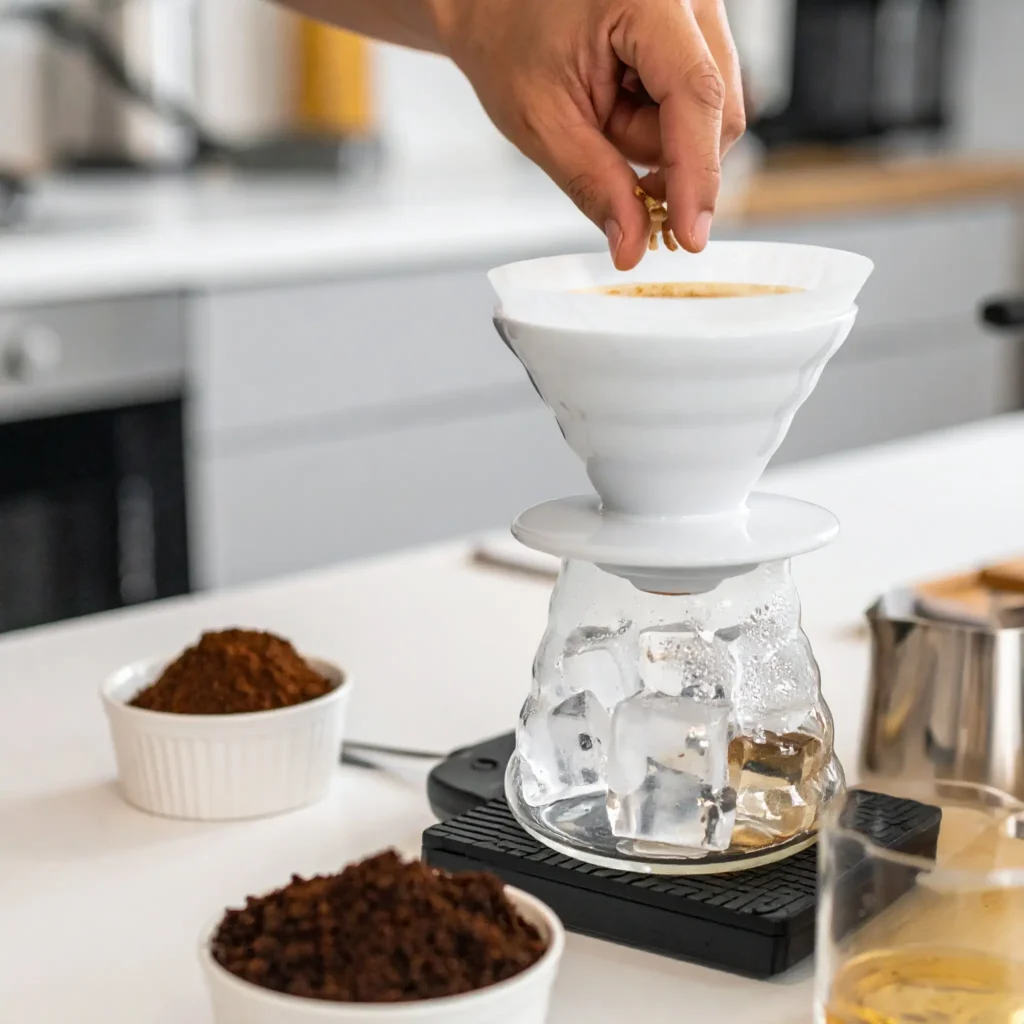
4. TIPS TO BREW LIKE A PRO
4.1 Control Your Drip Speed
The perfect drip speed is crucial. One drop per second yields a balanced brew in about 4 to 5 hours. If it’s too fast, your coffee will be under-extracted and weak. Too slow, and you’ll end up with over-extracted bitterness. Use a clamp, valve, or even a makeshift setup to keep things steady.
4.2 Chill Everything in Advance
Cold water is key. Make sure your ice, water, and brewing equipment are all pre-chilled. This keeps the extraction smooth and prevents flavor muddling. Room-temperature water will speed up the process but compromise the taste and texture.
4.3 Experiment with Flavors and Enhancements
Want to level up? Add flavor-infused ingredients to your water or grounds:
- A slice of dried orange or lemon zest
- A few drops of vanilla or almond extract
- A pinch of cinnamon or cardamom
- A drizzle of honey after brewing
These small touches can transform your ice drip into a signature café-style drink.
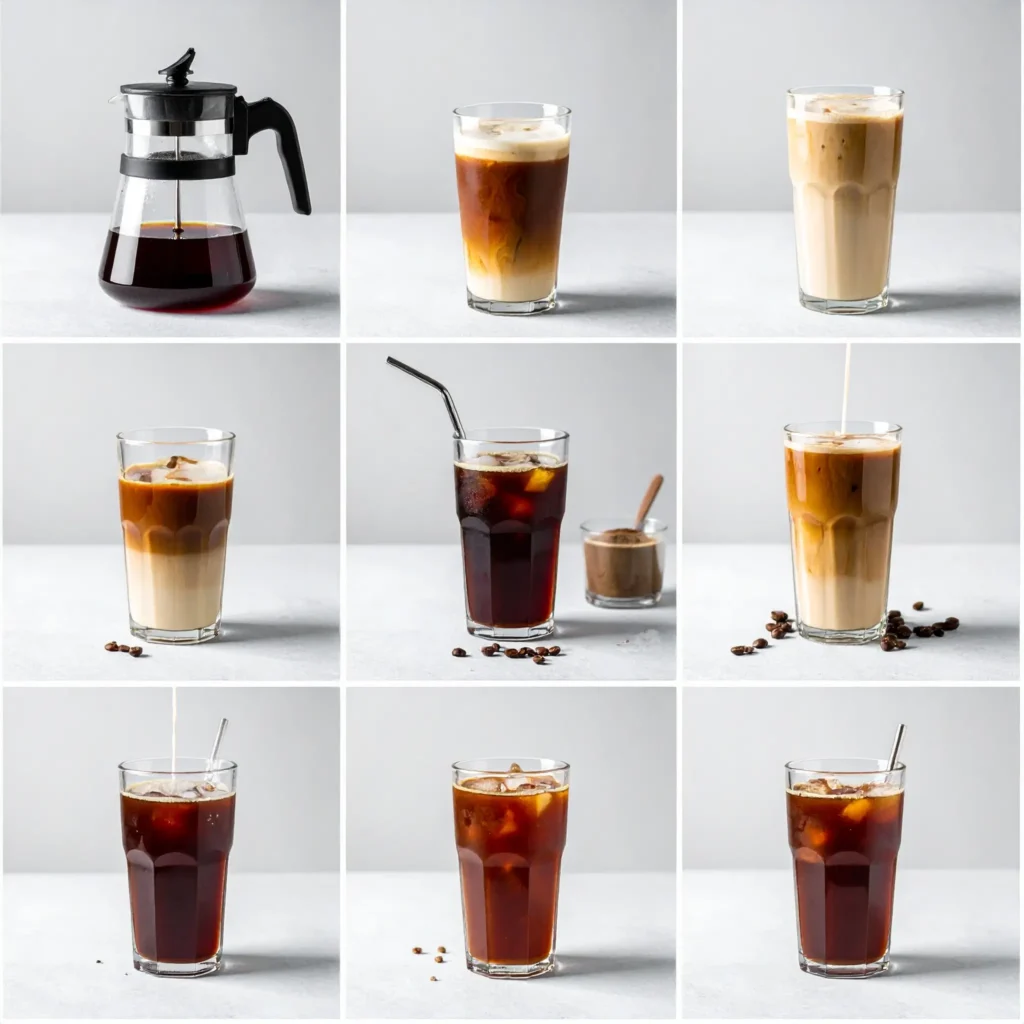
5. HOW ICE DRIP COMPARES TO OTHER COLD COFFEE STYLES
5.1 Ice Drip vs. Cold Brew
Ice drip is all about clarity and complexity. It uses a slow drip to extract nuanced flavors, resulting in a lighter body and more aromatic cup. Cold brew, by contrast, produces a stronger, bolder coffee with chocolatey and nutty notes. It’s heavier and more full-bodied.
5.2 Ice Drip vs. Flash Brew
Flash brew (or Japanese iced coffee) is brewed hot and then instantly chilled over ice. While it retains some brightness, it can lose delicate aromas. Ice drip never heats the water, which means it locks in floral and fruity notes and prevents bitterness from forming.
5.3 Ice Drip vs. Iced Americano
An iced Americano is made by adding cold water and ice to hot espresso. It’s sharp, intense, and quick to prepare. Ice drip is a slow ritual that offers complexity and smoothness, perfect for those who want to savor their coffee over time.
CONCLUSION:
Ice drip coffee is one of the most refined ways to enjoy cold coffee. Its delicate flavor, smooth finish, and artistic brewing method make it a favorite among true coffee lovers. With a little patience and the right setup, you can easily make café-level ice drip coffee at home—and impress your tastebuds (and your guests) in the process.
👉 Ready for your next iced coffee obsession? Try our AeroPress Japanese Iced Coffee Recipe!



